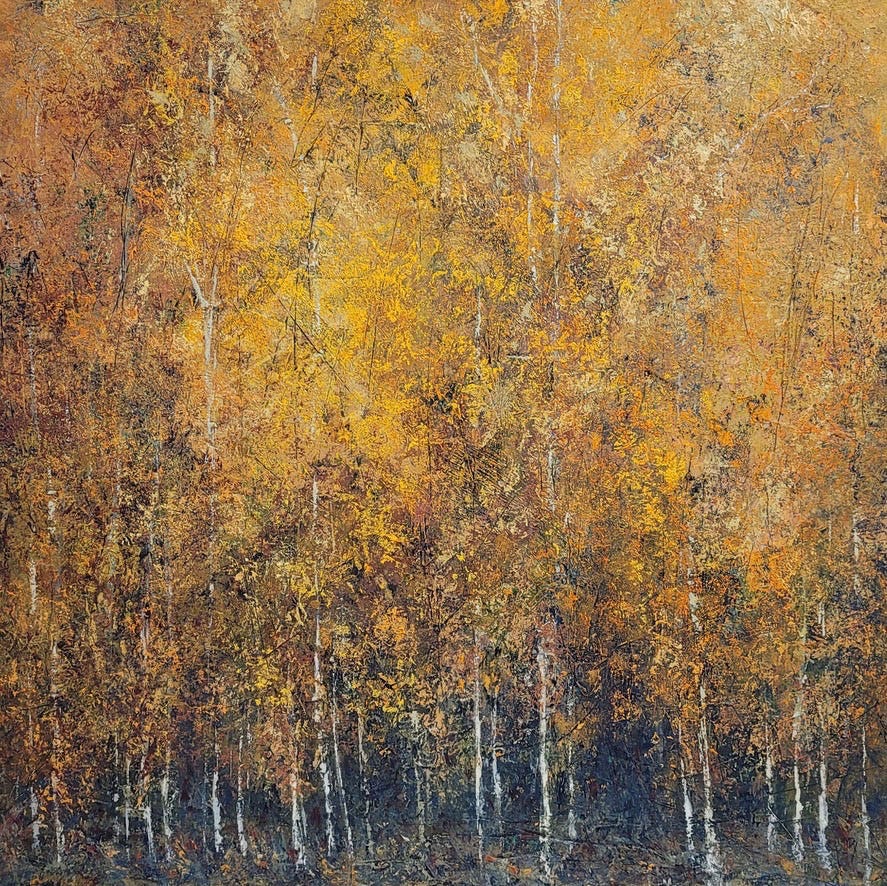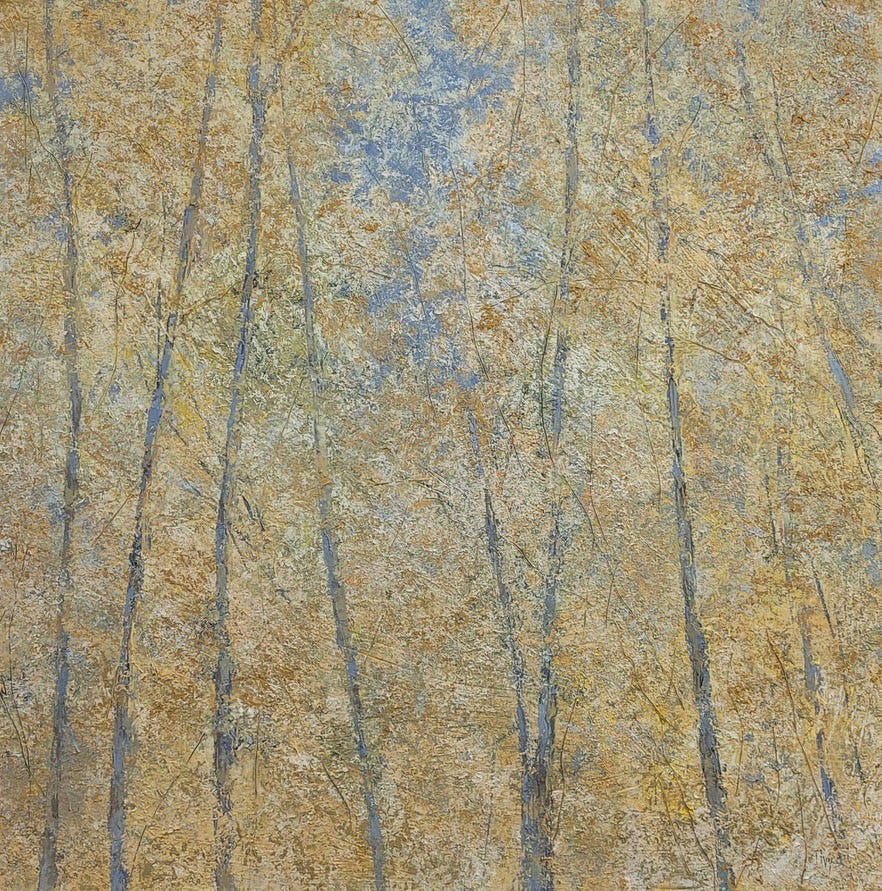Trees
In my paintings, I want to depict the mystery and stories of the forest, spoken in a language we have yet to fully understand.
What is it about trees?
Something about them speaks to me at a primal level. For an artist, they offer a wealth of inspiration and subject matter. I haven’t gone back to check the exact number, but a very large percentage of my paintings have trees in them. Maybe not as the actual focal point, but certainly they are there. They perform a function; to establish the horizon line, or add perspective or infer distance or depth to the scene.
But, lately, trees are front and center in my work. I have been doing a series I call my Forest Series of paintings. They are impressionistic in style, but with a contemporary feel, using cold wax medium to enhance texture. The medium provides value in its ability, when added to the oil paint, to manipulate the paint in unique ways that lends itself to layering, scraping and solvent reduction. The actual application of paint can be modified on the panel. All of these steps contribute to the end result. I like the unexpected effects and spontaneity in the painting process that cold wax medium allows. I just like the way the painting LOOKS! And it is my go-to for painting trees, or more specifically suggesting the leaves of trees.
The forest is a multi-layered ecosystem that we are only now beginning to appreciate. I learned so much through books like "The Overstory,” by Richard Powers and Peter Wohlleben's "The Hidden Life of Trees.” My Forest Series of paintings is all about the communication happening between and among trees. I want to depict the mystery and stories of the forest, spoken in a language we have yet to fully understand.
And then, there is this by Mary Oliver, from her poem When I Am Among the Trees, from her 2006 book, Thirst:
Around me the trees stir in their leaves
and call out, “Stay a while.”
The light flows from their branches.
And they call again, “It’s simple,” they say.
“and you too have come
into the world to do this, to go easy, to be filled
with light, and to shine.”
After reading these books, I cannot walk in a forest, or be with trees without listening a bit closer to hear what they might be saying. There is of course the rustle of the leaves in a breeze or the gentle leaning with the wind. But, underground, and perhaps in the crown’s canopy, there is a network of correspondence going on that we have known little about until now.
Trees share water and nutrients through their complex woven networks of roots and fungi; they communicate. They send distress signals about drought and disease, for example, or insect attacks, and other trees alter their behavior when they receive these messages. Scientists call these mycorrhizal networks.
So far, we humans can only hear these communications at the spiritual level. Trees make us more aware of our connections with something larger than ourselves. In mythology, they hold the nature spirits. We can worship them from below, a practice known as Dendrolatry.
But can we communicate with them? Will they know what we are saying? Can we understand what they are trying to tell us? Are they trying to tell us anything? I have no idea. But, I am with Mary Oliver. Isn’t nice to think they are?
Perhaps just being with and among trees is enough of a connection. Maybe the being there is all that is needed for a conversation to take place.
If you prefer to make a one-time donation, you can now contribute any amount to Juke using these Venmo and Paypal links.
Tabby Ivy is a painter living in Bigfork, Montana. Painting came late in her life. Her studio is a converted golf cart garage which is a sanctuary for working and reading her extensive collection of art books. Learn more at http://tabbyivy.com/.







hello, Constance. and, thank you so so much for your generous comment and reaction to the paintings. as an artist sometimes we can get too close to the "doing" of a painting. funny, my first thought was "not seeing the forest for the trees!" but its true. Time and distance from a piece of work finally allows it to be seen. Your thoughtful description perfectly captures my intention and hope for the viewer. Tabby
What a pleasure it would be to see the panels in person where I could track the three-dimensionality of your cold-wax method. Soulful work all the way around, mystery intact! Loved The Overstory too.